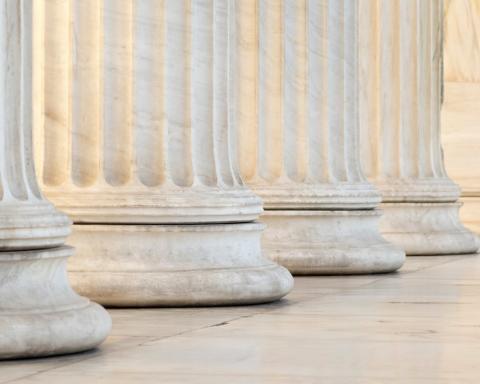No Case of Mistaken Identity? No Amendment Adding Time? Barred Claims Against New Defendants
Civil litigants in Illinois are generally allowed to amend their pleadings to add new parties, claims, or defenses at any time before a final judgment is reached. See 735 ILCS 5/2?616(a). This is true even when a plaintiff seeks to amend a pleading in order to assert a claim that would otherwise be barred by the relevant statute of limitations against a party that was not originally named as a defendant, provided that certain requirements are met. See 735 ILCS 5/2?616(d). Recently, the Illinois Appellate Court for the First District reversed a six?figure judgment in favor of a plaintiff against two defendants because the claims against defendant, which were added to the plaintiff?s complaint pursuant to ?2?616(d), were held to be time?barred. This decision serves as an important reminder to litigants that, as a threshold matter, an amendment adding an otherwise time?barred claim against a party not originally named a defendant will only be allowed if the plaintiff can establish that he or she intended to sue that party, but did not do so due to a mistake concerning the party?s identity.
In McCarthy v. Omega Psi Phi Fraternity, Inc., No. 1?09?2950, 2011 WL 2623313 (1st Dist. June 30, 2011), the plaintiff initially asserted defamation claims against two of his former fraternity members. The plaintiff?s claims were based on his belief that the two men, after being expelled from the fraternity, encouraged the fraternity?s local chapter representative to disseminate false information regarding the plaintiff?s involvement in illegal hazing activities in order to sabotage the plaintiff?s campaign for an elected office within the fraternity. 2011 WL 2623313 at *1. The allegedly false information on which the plaintiff?s claims were based was published in April 2003. 2011 WL 2623313at *2.
The plaintiff filed his initial complaint against the expelled fraternity members in July 2003. Later that year, the plaintiff successfully sought leave to amend his complaint to add a claim for defamation against the fraternity?s local chapter representative (in his individual capacity). Id. The allegations underlying each of the plaintiff?s claims, however, did not change with the addition of the new defendant. Id.
After significant motion practice and a settlement between the plaintiff and the expelled fraternity members, the case proceeded to trial in summer 2007. 2011 WL 2623313 at *3. After the trial concluded, but before the parties? written closing arguments were due, the plaintiff sought leave to file yet another amended complaint in September 2007. This time, the plaintiff?s proposed amendments asserted defamation claims against the national fraternity, the local chapter of the fraternity, and the local chapter representative (in his official capacity). 2011 WL 2623313 at **3 ? 4. The plaintiff argued that the amendments were justified based on evidence he first learned about during the trial against the local chapter representative. Id. The trial court granted the plaintiff leave to amend his complaint to add the claims against the national fraternity and the local chapter of the fraternity (collectively, the Fraternity), but also dismissed the claim against the local chapter representative in his individual capacity. 2011 WL 2623313 at *4. The trial court also ordered the plaintiff to remove the local chapter representative?s name from the caption of the case. Id.
The Fraternity, as the only remaining defendant, answered the plaintiff?s amended complaint and raised several affirmative defenses. One of those defenses stated that the plaintiff?s claims against the Fraternity were barred by the one?year statute of limitations that governs defamation claims. Id. See also 735 ILCS 5/13?201 (imposing a one?year limitations period for defamation claims). The parties then agreed to submit the case to the court for a decision based on the record of the original trial. In May 2009, the trial court found the Fraternity liable for defamation and imposed actual and punitive damages against it. Id.
The Fraternity raised a number of issues in its appeal, but the appellate court?s decision reversing the trial court?s judgment focused solely on the so?called "relation back doctrine" set forth in 735 ILCS 5/2?616(d). That section provides a method by which an amended complaint adding a party can relate back to a previously filed pleading. It states that a cause of action against a party not originally named a defendant is not barred under any statute of limitations provided that (1) the action was commenced within the time before the relevant statute of limitations expired, (2) the party received notice of the action within the relevant limitations period and knew or should have known that, but for a mistake concerning the identity of the proper party, the action would have been brought against it, and (3) the cause of action asserted in the amended pleading grew out of the same transaction or occurrence alleged in the original pleading. 735 ILCS 5/2?616(d).
Before examining whether the plaintiff?s amendment satisfied the requirements of ?2?616(d), the appellate court analyzed whether the plaintiff had made a mistake in his prior pleadings concerning the identity of the Fraternity. 2011 WL 2623313 at *5. Without such a mistake, the appellate court noted that benefits afforded by ?2?616(d) would be unavailable to the plaintiff. Id.
The appellate court began its analysis by identifying the reasons why the plaintiff had filed his lawsuit. It concluded that the plaintiff had filed the lawsuit to hold responsible the persons he believed had defamed him and noted that the plaintiff had taken steps toward accomplishing that goal by asserting claims against the expelled fraternity members and the local chapter representative. 2011 WL 2623313 at *6. Because those claims were consistent with the intent underlying the plaintiff?s lawsuit, the appellate court determined that the plaintiff?s failure to add the Fraternity as a defendant in the case was not based on the type of mistake contemplated by ?2?616(d). Id. In other words, the appellate court found no evidence in the record to suggest that the plaintiff intended to sue the Fraternity but instead sued the expelled fraternity members and the local chapter representative due to a mistake concerning the Fraternity?s identity. Consequently, the appellate court held, without regard to whether the Fraternity may have been an appropriate additional defendant in the plaintiff?s case, that the plaintiff?s claims against it were barred due to the expiration of the one?year statute of limitations governing defamation claims. Id.
McCarthy serves as a reminder that, as a threshold matter, the relation back doctrine set forth in ?2?616(d) is only available to a plaintiff that can establish that he or she intended to sue a certain party but, due to a mistake regarding that defendant?s identity, sued a different party. Such a mistake occurs, for example, when a tortfeasor incorrectly identifies itself to an injured person after an accident, and the injured person, intending to sue the tortfeasor, later sues the party wrongly identified to it. See Fassero v. Turigliatto, 349 Ill.App.3d 368, 811 N.E.2d 252, 285 Ill.Dec. 11 (4th Dist. 2004) (personal injury plaintiff who intended to sue driver of car that collided with her car rather than owner of car was allowed to amend her complaint after limitations period and add driver as defendant when it was discovered that driver at time of collision was brother of owner of car but had identified himself as his brother after accident). In such a case, ?2?616(d) provides the mechanism by which a plaintiff may then be able to amend his or her pleading after the expiration of the limitations period to add the correct party to his or her lawsuit. However, without such a mistake, the benefits afforded by ?2?616(d) are unavailable to a plaintiff seeking to amend his or her pleading after the expiration of the relevant limitations period.








